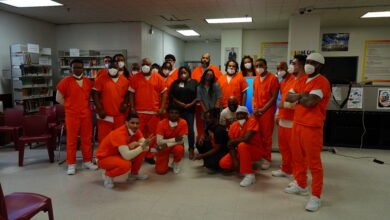Twin Cities Funders and Theatres of Color Are Transforming Relationships, Part One

Such a radical decision also led to other modes of inquiry, such as how people enter spaces and conversations and what the context was for each person arriving to the conversation. One significant vulnerability the TCTOCC leaders shared was their cumulative and collective trauma, not only as BIPOC leaders, but in the process of repeated applications for funding. “It upended the whole way that we in philanthropy usually approach conversations, situations, and expectations and opened the way to be vulnerable and to hear deeply the trauma—the impact of inequity,” says Eleanor Savage, president and chief executive officer of the Jerome Foundation. Al Justiniano, founder and artistic director of Teatro Del Pueblo, acknowledged the impact of this shift: “The TCTOCC-REFC collaboration was far from just a transactional exchange. It allowed our members to delve deeper into our shared humanity and vulnerabilities, leading to a significant shift in the power dynamic between program officers and theatre leaders. I now feel empowered to approach funders with confidence, recognizing the mutual value in the relationship.”
Grant applications often take weeks of preparation, with multiple questions completed across multiple departments in a given organization. Some larger grants require hiring outside consultants to finesse language, or bookkeepers to run audits or to ensure eligibility. Not only does it take significant resources to apply for many grants, but BIPOC arts organizations often find themselves in situations where they are addressing multiple interlocking needs of their communities that go beyond art-making, which can include anti-racism work, community events, and even providing resources often left to social services organizations. So these applications sometimes become exercises in justifying the very existence of certain communities in space. Along with the emotional, financial, and psychic toll these processes take, every leader relayed the trauma of rejection, of project viability hinging on rejection after rejection.
Nesting Dolls, or: Interlocking Responsibilities
Grant funding has a direct implication on the viability of not only the organization but also the livelihood of its leaders. Some TCTOCC artistic directors’ personal finances are so intertwined with their organizations’ that in the past they have responded to defunded projects with dire actions. “I [grew up] watching my dad struggle for my entire life: mortgaging our house multiple times to keep this place open, laying people off, always making sure that we paid the artists, he and other managing directors like Chris Widdess [Penumbra’s former managing director] not taking salary. That kind of thing. I know that affected me as a leader and as a person,” says Bellamy. While these leaders can feel beholden, powerless, or even subservient in the traditional funding landscape, their relationship to the BIPOC communities they work in means they inhabit their organizations as one of, if not the primary, decision-makers of the organization. This means they are able to adjust and change to the needs and resources of the community. It also means that the battles they wage around white supremacy and colonialism are shared by their staff, artist collaborators, and audiences. They are part of a larger culture that amplifies them as they amplify their community’s needs.
While an artistic director can change radically the direction of their organization based on their vision—and are often encouraged to do so—a funding officer can risk not only their personal financial stability, but the viability of a given funding initiative by asserting different agendas or inclinations.
Meanwhile, funding officers hold a comparably stable financial life. Their salaries are less directly intertwined to their performance or outside metrics. They can take out mortgages or loans and reasonably expect to continue paying them for years. With this stability comes a different set of problems. Funding officers exist as individuals within much larger organizations that often have multiple if not conflicting goals. While they may technically hold the purse strings of a given funding source or initiative, many funding officers only have nominal say over what kind of projects are funded, on what scale, and in what way. Justin Laing, principal consultant of the Hillombo Group and facilitator of TCTOCC-REFC conversations and retreats, reflects on this relationship to institutional power:
“There was a moment where program officers had to say, ‘This is what I can do. And this is causing a little bit of some weight on my end.’ The program officer is not this philanthropoid that can show up in full capacity. It can look sometimes as though the program officer is the foundation, that they are the ones holding power. [But] I find program officers will report feeling the most disempowered. They feel like they are small parts of a much bigger piece”
Therefore, a funding officer who perceives white supremacist or colonialist tendencies of a funding initiative or their own organization might work in a context where those issues may be minimized or ignored. Equity-minded individuals might find themselves fighting against the parameters of “merit” set by an out-of-touch board, supervisor, or an entire philanthropy sector. While an artistic director can change radically the direction of their organization based on their vision—and are often encouraged to do so—a funding officer can risk not only their personal financial stability, but the viability of a given funding initiative by asserting different agendas or inclinations.
“One of the models that really helped us to understand the complex dynamics within the group was the structure of nesting dolls, right?” says Little. In this metaphor, each person who arrived at the TCTOCC-REFC meetings represented multiple interlocking selves. They were individuals with their own tastes and personalities. Then, they represented the organizations they worked for, where some could make large sweeping decisions for those organizations and others would need to recruit buy-in. They represented either REFC or TCTOCC, and each group had specific agendas. And then there was the overall TCTOCC-REFC coalition that was trying to change how philanthropy and theatre interacted and aligned. This idea of nested priorities helped the group move from getting to know each other as individuals to addressing large-scale structural change.




